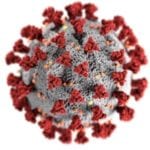The University of South Australia (UniSA) is partnering with SA Water in an effort to improve worker safety. To that end, the two organizations will collaborate on a pilot study that uses wearables to get a better sense of working conditions in the field.

During the pilot, 15 members of the SA Water staff will be outfitted with wristbands and smart shirts. The wristbands will monitor the wearer’s level of alertness, and watch for signs of sleep deprivation. They will also try to measure each individual’s focus and their overall mental health.
The smart shirts, meanwhile, have biometric sensors embedded in the fabric. Those sensors will capture cardiac and respiratory information in addition to the alertness and mental health information being recorded with the wristbands.
Researchers at UniSA will then analyze all of the information to get a better sense of the toll that utilities work takes on the body. For example, SA Water employees often need to make long drives to remote areas to perform repairs, and pipe maintenance itself is often a physically taxing endeavor. UniSA is hoping that it will be able to use the information it collects to identify early signs of fatigue (or some other problem), which will in turn allow supervisors to step in and prevent people from doing dangerous tasks if they are not in a condition to do so.
The goal is to improve workplace safety for those at SA Water, and for those working in other similarly perilous fields. SA Water employees could be asked to wear the biometric equipment permanently, depending on the outcome of the study.
“With a vast water network, our people are often performing challenging physical tasks in a range of weather conditions and our trial will explore how technology can improve their health and wellbeing,” said SA Water People and Safety GM Kylie Johnson. “All of these collective insights can lead to improved situational awareness and allow certain work activities to be altered, postponed or optimised, creating better safety outcomes for our people.”
SA Water is not the first organization to try to use wearable tech to improve worker safety. Canaria previously provided biometric tech for a workplace safety pilot at Lake Giles Iron Project in Western Australia, while IBM has partnered with Garmin and Guardhat to create devices that can detect changes in the surrounding environment.
Source: Utility Magazine
–
July 13, 2022 – by Eric Weiss






Follow Us